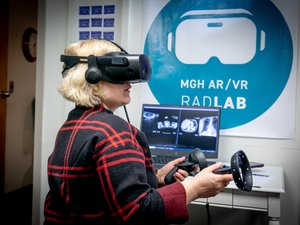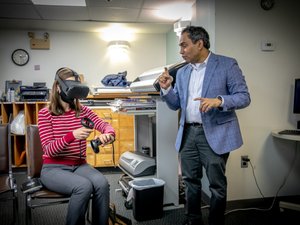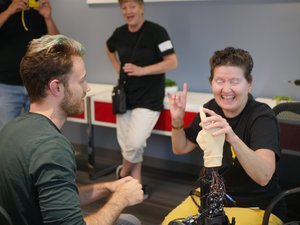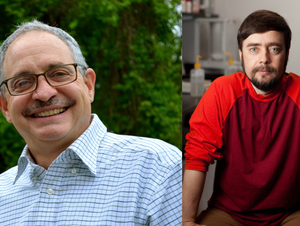
Twenty years ago, medical schools were telling students they needed to be handy with a laptop to keep up with the times. Now, they’re saying the same about virtual reality and augmented reality, known collectively as extended reality.
“Now it’s like, you’re going to have to be more handy with 3D imagery. We’re just evolving,” said Julie LeMoine of UMass Chan Medical School.
Massachusetts medical schools are experimenting with VR and AR to see how it can help students collaborate remotely, practice procedures and roleplay with virtual patients. As the software improves and hardware becomes less expensive, medical school faculty predict that VR and AR will become an increasingly more widespread aspect of medical school and the healthcare field.
LeMoine said some of the main areas medical schools are using extended reality are in holding distributed lectures, diving into anatomical visualizations and hosting multiplayer team trainings. LeMoine is an assistant professor of neutrobehavioral technology in the department of psychiatry. She received her Ph.D. from University College Dublin in applied XR in health and wellbeing.
Using VR for lectures can bring together people in the same virtual room from different locations. Visualizations can help students learn anatomy by walking through the brain or synapses.
LeMoine said they’re exploring virtual reality role playing scenarios using multiplayer technology. For example, this could be used to have conversations with a virtual teen about drugs or sexuality. They’re also making a version with an elderly patient.
“They have actors here that act as patients, they can’t really be children. So the fact that you can build a virtual reality child at a young-ish age that’s talking about something really difficult to hear as a doctor, that kind of thing to prepare them, that’s really powerful,” LeMoine said.
And beyond graduation, VR and AR are increasingly being used by doctors, hospitals and healthcare companies. These groups and individuals are testing out how both technologies can enable at-home physical therapy, help patients de-stress in the hospital, train doctors and more.
“We need to prepare our future doctors to understand how to harness these technologies,” LeMoine said.
Read more: Reporter’s notebook — Go inside MGH’s AR/VR lab
Not all medical schools are adventuring with VR and AR just yet. A spokesperson for Tufts University’s medical school said they are not currently using VR/AR technologies to train medical students. She said the director of the simulation lab “is looking at very closely and is still evaluating what will work best for Tufts University School of Medical.”
Like UMass, Boston University is also venturing beyond virtual simulations for exams and procedures. Dr. Pablo Buitron de la Vega, an assistant professor of medicine at Boston University, said they are experimenting with ways to use VR to teach students about topics like social justice and social determinants of health.
“The current learning experiences and the current didactics that we have to teach about equity and to teach about social determinants fell short in terms of providing the right environment and the right motivation and engagement for the students to learn about this,” de la Vega said. “You can share data…but if you’ve never experienced those things, it’s really hard to understand.”
At BU, de la Vega helped pilot programs that had teams of medical, physician assistant, nutrition and social work students discuss topics like income, housing and education with virtual patients. Right now, characters in these VR situations, such as a child’s parent, are roleplayed by faculty members. The team is working on making these characters answer questions automatically so they can expand its use with more students.
De la Vega said some people might question why VR is the right tool for these lessons. Why not have students meet with people experiencing these challenges in the health system? But de la Vega said community organizations are overwhelmed with demands right now. And asking individuals to constantly retell stories of painful experiences can be difficult for them.
De la Vega said he also makes it clear to students that the simulations can’t convey just how difficult and multifaceted situations such as poverty can be. However, he said it is a starting point to put students in other people’s shoes and get them interested in learning more.
“If you can at least experience a little bit of it before you’re engaging with actual patients, I think it helps students have a different perspective,” de la Vega said.
Sign up for The Beat, BostInno’s free daily innovation newsletter from BostInno reporter Hannah Green. See past examples here.








